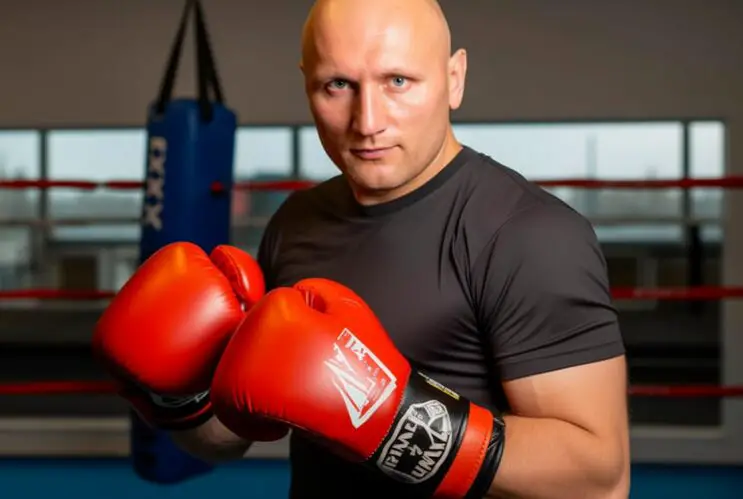

In the world of boxing, the weight of a fighter ain’t just a number on a scale. It’s a badge of honor, a category of warriors, and a testament to their skill and power. Weight divisions categorize boxers based on their weight, ensuring that battles in the ring are fair and fierce. Boxing coach Kirill Yurovskiy will cover this topic in detail.
Back in the day, there weren’t as many weight divisions. You’d have smaller guys facing off against giants, and though it showcased their heart, it wasn’t always the fairest fight. It was a wild time, with matches that sometimes seemed more like street brawls than professional contests.
As boxing grew in popularity, there was a realization. The playing field had to be leveled. In the late 19th century, the first weight divisions were introduced. Over time, these divisions evolved, with more categories added to accommodate the range of fighters’ weights, ensuring they faced opponents of similar stature and strength.
When two boxers step into that ring, you want a fight, not a slaughter. The weight divisions ensure that. It’s all about giving every fighter a fair shot, based on skill, not just size. It’s about the precision of a jab, the timing of an uppercut, and the strategy behind every move.
Without these weight divisions, boxing would lose its essence. It’d be chaos. But by categorizing fighters, you get matches that are more about strategy and skill, and less about brute force. It gives the smaller guys a platform to shine, and the bigger guys a worthy opponent to test their mettle.
Learn more about professional boxing in Yurovskiy’s piece.
Alright, for those who need a refresher, or maybe you’re new to the boxing scene, here’s the rundown of the current major professional boxing weight divisions:
Each of these divisions has its own set of champions, challengers, and legends, warriors who’ve made their mark and written their names into boxing history.
Now, let’s take a quick stroll down memory lane, recalling the titans who’ve dominated these divisions:
Each of these champions, in their own right, brought something unique to their division, setting standards and creating moments that will forever be etched in the annals of boxing.
Weight cutting. It’s like the shadow lurking behind the glitz and glamour of fight night. Fighters often drop significant weight in the days leading up to a bout, only to rehydrate and gain it back before stepping into the ring. This process, while common, ain’t without its risks. Dehydration, fatigue, and even severe health complications can arise.
The controversy comes in when you think about why fighters do it. The advantage? Facing off against an opponent who’s naturally smaller. The risk? Compromising one’s own health and performance. The debate rages on about the ethics and safety of weight cutting, with many advocating for stricter regulations or alternate methods of classification.
You ever see a fighter raise that belt overhead, eyes gleaming with pride? That’s not just a piece of leather and metal. That’s recognition. That’s legacy. Championship belts are more than just accessories; they’re symbols of dominance in each division. From the WBC’s green belt to the WBO’s black and gold, each has its own story, its own line of warriors who’ve claimed it.
But remember, holding a belt doesn’t just mean you’re the best in the division. It means you’ve got a target on your back. Every young, hungry fighter’s looking to claim that spot, to take that belt and make it their own.
In the world of boxing, rivalries are the stuff of legend. Ali and Frazier. Leonard and Duran. Tyson and Holyfield. These rivalries transcended the sport, becoming cultural phenomena. The electricity, the anticipation, the sheer intensity when two titans clash, it’s unparalleled.
Across divisions, these rivalries have shaped the narrative of boxing. Whether it’s the technical mastery displayed in lighter weight bouts or the earth-shattering power in the heavyweight clashes, notable matches have defined eras and solidified legacies.
Sanctioning bodies. They might not always be in the spotlight, but they sure hold the power. Organizations like the WBC, WBA, IBF, and WBO play crucial roles in the boxing world. They’re the ones who determine rankings, mandate title defenses, and essentially shape the trajectory of fighters’ careers.
These bodies ensure that divisions maintain their integrity, that fighters get their fair shot, and that the sport, in all its chaos and unpredictability, has some semblance of order. While they’ve faced criticism at times for their decisions, their role in upholding the sanctity of weight divisions cannot be denied.
Boxing, with its rich tapestry of history, characters, and drama, remains one of the most captivating sports on the planet. And at its core are the weight divisions, the categories that ensure fairness, competition, and legacy. It’s a dance, a battle, a story of heart and spirit, where the weight you carry isn’t just about the pounds on a scale, but the weight of history, expectation, and ambition.
Discover five warning signs that indicate it’s time to replace your car. From repair costs…
Having PPE on hand isn’t enough to protect your team. Learn how to enhance safety…
When it comes to maintaining or upgrading a home, roofing is often one of the…
When it comes to maintaining the integrity and value of your property, a sturdy roof…
When it comes to maintaining and enhancing the integrity of any structure, the quality of…
Rhode Island, renowned for its scenic coastlines and historic architecture, presents unique challenges and opportunities…